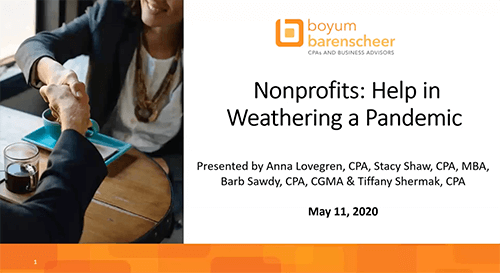Our mission is your success.
Nonprofit organizations operate with lean budgets, hard-working staff and volunteers and mission driven activities that require all of the resources available to them. Boyum Barenscheer’s nonprofit team partners with our clients to help improve their financial management, streamline business processes, manage compliance and build a bright future. In addition to working with nonprofit organizations, Boyum Barenscheer and its staff members support numerous nonprofit organizations in the community by volunteering their time or by giving financially.
